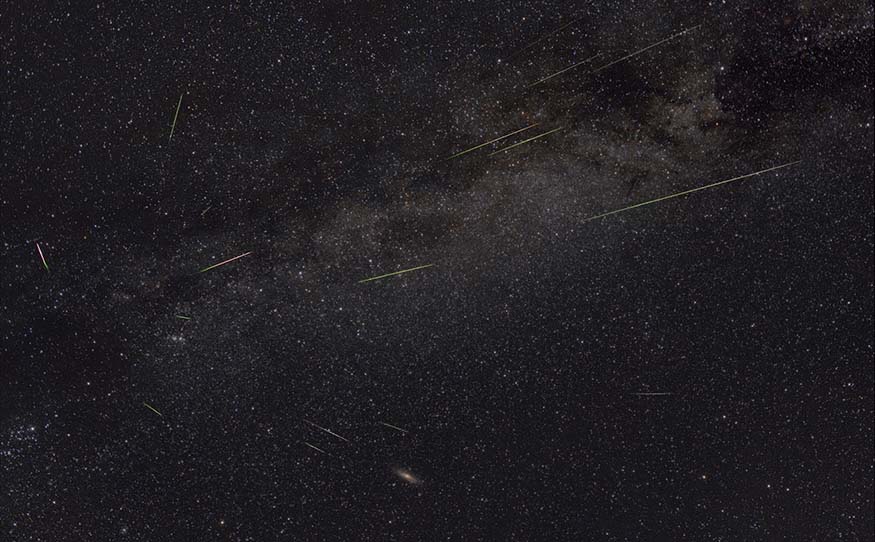
BEAUTY: 
BRAGGING RIGHTS: A beautiful sight
HOW EASY IS IT TO SEE? Just look up, and wait
TYPE: Special event
DISCOVERED: Known since antiquity
Sometimes when stargazing, you need to hunch over an eyepiece, tracing the dust lanes in the Andromeda Galaxy or waiting for a brief moment of steady air to see Mars’s features. At other times, however, you just need to relax on a lawn chair, look up at the night sky, and take it all in. Meteor storms are firmly in the latter camp.
Space is filled with dust and debris from comets and asteroids—but it’s not evenly distributed. Instead, clumps of dust follow the same orbital paths of their origin. Dust spewed from comets leaves a trail that follows the comet’s orbit. Sometimes those dust-filled orbits cross Earth’s path in space.
When that happens, the particles of dust slam into our atmosphere at up to 50 miles per second. The dust turns into a shooting star, falling down from the sky in a fiery line. Most of the time, when we cross paths with a dust swarm, we see around 60 shooting stars per hour—what we call a meteor shower.
But every decade or so, we happen to hit a particularly dense patch, and then you can see shooting stars falling like rain. Spotting 60 shooting stars per minute is not uncommon, and extraordinary events feature several meteors per second. That’s a meteor storm and it is not to be missed.
Recurring showers. As the Earth goes around the sun, it passes through several dusty patches left behind by orbiting comets. The most famous tend to reliably result in at least a meteor shower and occasionally bloom into a full-blown storm; during a meteor shower, the meteors appear to emerge from a specific part of the sky. For this reason, they’re usually associated with specific constellations (listed below).
• Quadrantids (Boötes): January 3rd to 4th.
• Eta Aquarids (Aquarius): May 4th to 5th.
• Perseids (Perseus): August 12th to 13th.
• Leonids (Leo): November 16th to 17th.
• Geminids (Gemini): December 13th to 14th.
Stay warm. The best time to see a meteor shower is usually after midnight, when the night-side of Earth is facing forward on its orbit. You’ll be outside for a couple of hours, watching the show, so make sure you stay warm. Get some lawn chairs, blankets, some good friends, and just stare up at the sky.
Find the radiant. You might notice that many shooting stars seem to start at one area in the sky and radiate away in random directions. The center area is the point at which the Earth is intersecting the dust swarm. Recurring showers are usually named after the constellation they’re coming from. The Leonids, for example, seem to radiate out from the constellation Leo.